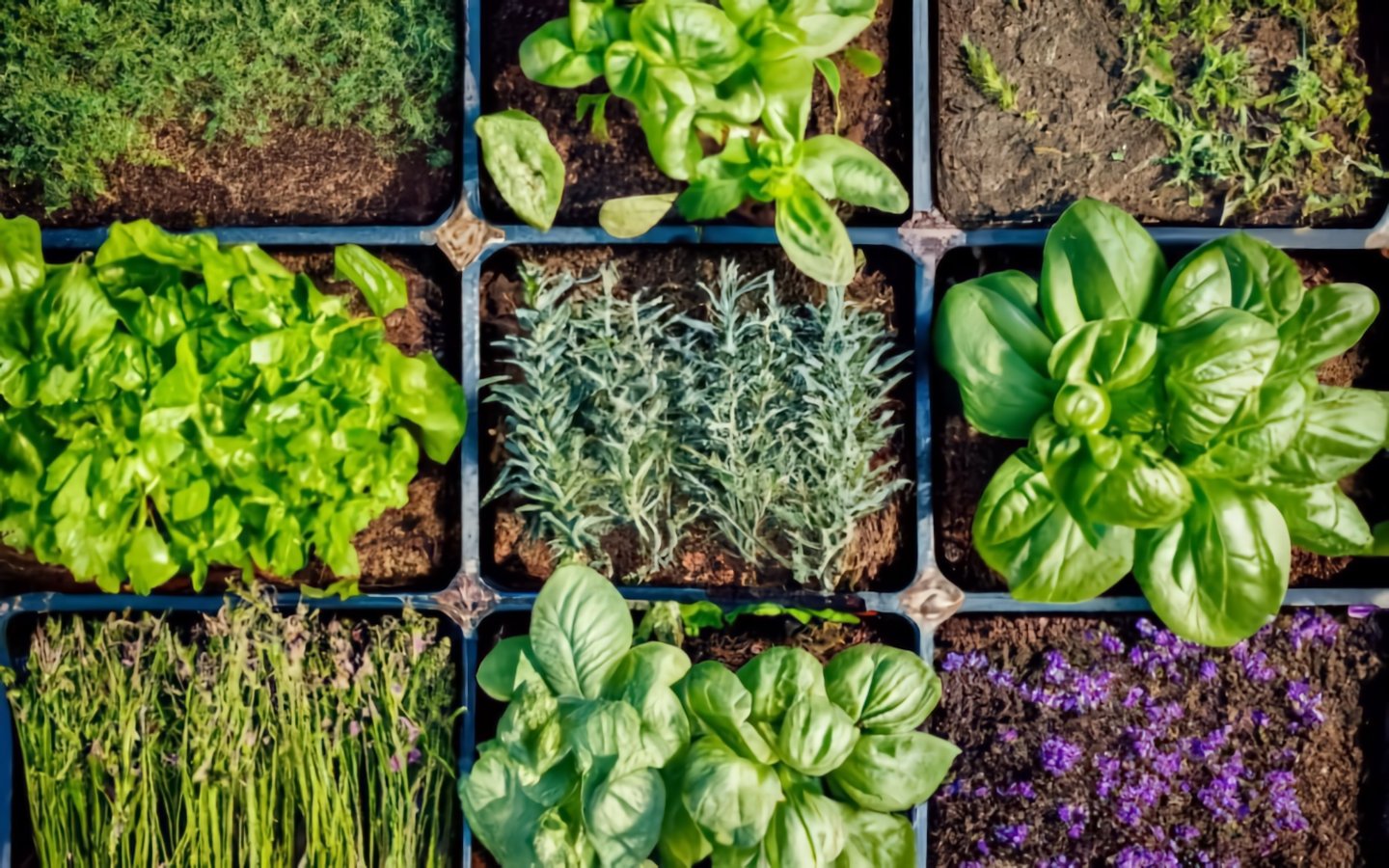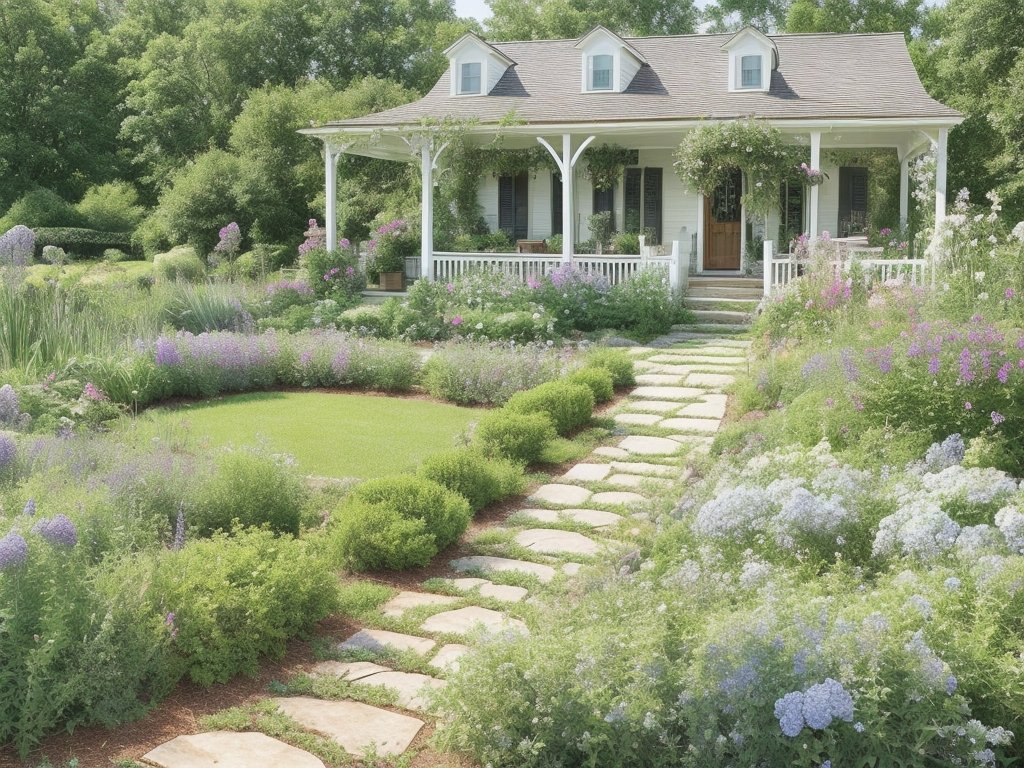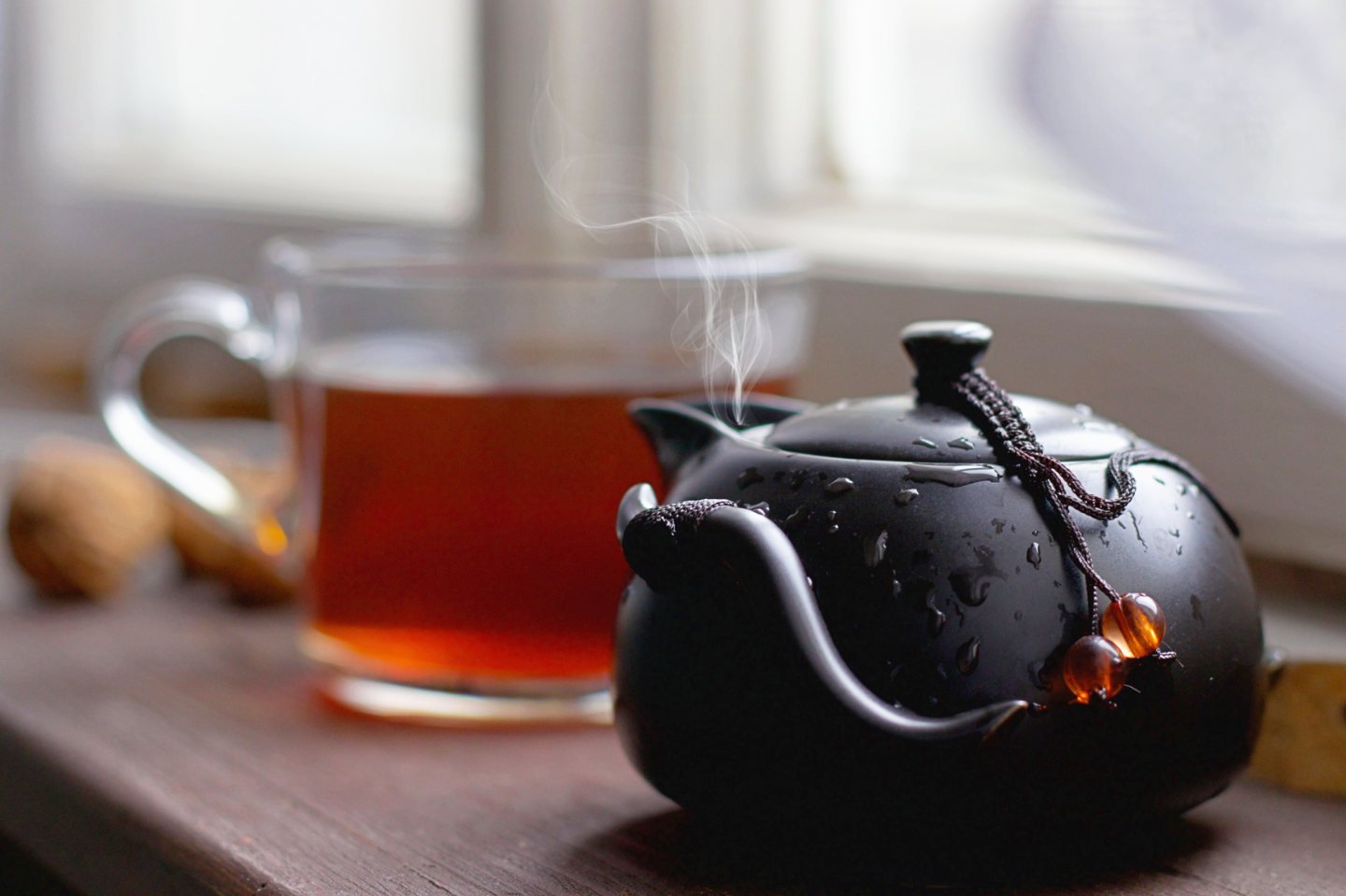Rectangular Herb Garden Design
Rectangular shaped herb garden design has been one of the most used shapes for any herb gardens since the early middle ages. Even though rectangular herb garden design may sound simple, rectangular herb garden design can be made into a formal herb garden design. Rectangular herb garden design may vary in sizes, herbs, and the way how herbs are planted. Usually, rectangular herb gardens are situated as near to the kitchen as possible, because, herbs planted on it are herbs with culinary purposes.
Key Points:
- Rectangular shape is a classic and practical design for herb gardens.
- Situate the herb garden near the kitchen for convenient access.
- Divide the garden into sections based on herb use – culinary, medicinal etc.
- Allow at least 6 hours of sunlight per day for optimal herb growth.
- Space out herbs appropriately to prevent overcrowding and competition.
Planning a Rectangular Herb Garden Design
If you are planning on making a large rectangular herb garden design, then you might want to place stepping stones or narrow paths across your herb garden. Having stepping stones or narrow paths between your herbs can give you access to all your herbs from every side.
Steps in Making a Rectangular Herb Garden Design
- Choosing an area where sunlight can reach is very beneficial for the survivability of all your herbs. You have to take into consideration how long will that certain area be exposed under the sunlight. Most herbs require approximately 6 hours of sun exposure for them to thrive and grow properly.
- Try to exactly measure the area where you are planning to place your rectangular herb garden design. Once you already measured the area, mark your herb garden design’s perimeter by driving stakes into the ground.
- Herbs can survive better and grow healthier in soils that are slightly acidic (5.5 to 7.5) than alkaline. You can measure your soil bed for its pH level.
- Inspect the quality of your soil by digging square holes in certain areas of your garden. Determining the quality of your soil can help you decide whether your soil needs organic matter for additional moisture, install extra drainage, or remove large rocks underneath the soil. Having the right quality of soil can keep your herb garden healthy.
- Determine the purpose for your herb garden design, such as culinary, medicinal, ornamental, or mixed. If your rectangular herb garden design is quite large, you can divide your herb garden design according to purpose. For example, you can plant culinary herbs on the other side, while you can plant medicinal herbs opposite to your culinary herbs.
- Once you have decided or determined the purpose/s of your herb garden design, you can now decide on what herbs are you going to plant on your herb garden. Before you decide on what herbs to include, do a quick research on each herb and whether they can thrive in your herb garden’s environment.
- If all your herbs are ready to be planted, make sure that each herb has its own space in your rectangular herb garden design. Never overcrowd or plant herbs very close to each other, for they will compete for nutrients and space. In planting your herbs into your rectangular herb garden design, you also have to consider on how you want your herb garden to look like. You have to decide on the herbs’ color and height, and how it can affect the look of your rectangular herb garden design.
Conclusion
A rectangular herb garden is a timeless and versatile design that has been used for centuries. With proper planning and preparation, a rectangular layout can be adapted to work for all types of herbs and customized to your specific needs. Whether you want separate beds for culinary, ornamental or medicinal herbs, or a mixed garden, a rectangular shape allows you to be creative. Place your rectangular herb beds near the kitchen for convenience, amend the soil, allow ample sunlight, and use boundaries like paths or edging to create an organized and productive garden. With the right herbs chosen and proper spacing for growth, your rectangular herb garden can provide a bounty of flavors, fragrances and remedies for years to come. The simple rectangular form makes herb gardening easy, attractive and accessible for gardeners of all levels.
FAQ
What size should a rectangular herb garden be?
The size can vary, depending on available space and how many herbs you want to grow. Aim for at least 4×8 feet for a small culinary herb garden.
What kind of soil is best for herbs in a rectangular garden?
Herbs prefer loose, well-draining soil with a slightly acidic pH between 6.0-7.0. Amend clay or sandy soils with compost.
How much space between herbs should there be?
Leave 12-18 inches between most herb plants, 24 inches for larger varieties like rosemary and lavender.
Should culinary and medicinal herbs be planted together?
They can be but it’s better to separate them into their own sections for easier care and harvesting.
What are good herb companions for a rectangular garden?
Group herbs by water and sunlight needs. Plant mints away from other herbs. Basil goes well with oregano and thyme.
Should paths be included in a rectangular herb garden?
Yes, place stepping stones or gravel paths approx. every 4 feet for easy access and to divide sections.
What are some edging options for rectangular herb beds?
Brick, stone, wood, metal garden edging, or low hedges like boxwood work well to outline the beds.
Related posts:




